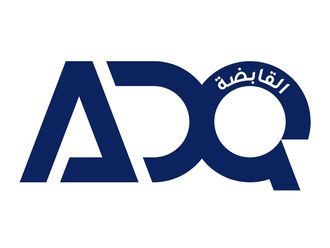Dubai
About $79 trillion (Dh290.5 trillion) or half of the global stock of capital, totalling $158 trillion (in 2010 dollars), will reside in the developing world by 2030, compared to less than one-third today, according to the latest edition of the World Bank’s Global Development Horizons (GDH) report, released on Thursday.
Developing countries’ share in global investment is projected to triple by 2030 to three-fifths, from one-fifth in 2000, says the report, titled ‘Capital for the Future: Saving and Investment in an Interdependent World’.
Strong saving rates in developing countries are expected to peak at 34 per cent of national income in 2014 and will average 32 per cent annually until 2030. “In aggregate terms, the developing world will account for 62-64 per cent of global saving of $25-27 trillion by 2030, up from 45 per cent in 2010,” the report said.
In absolute terms, saving will continue to be dominated by Asia and the Middle East, it said. “In the gradual convergence scenario, in 2030, China will save far more than any other developing country — $9 trillion — with India a distant second with $1.7 trillion, surpassing the levels of Japan and the United States in the 2020s,” the report says.
As a result, under the gradual convergence scenario, China will account for 30 per cent of global investment in 2030, with Brazil, India and Russia together accounting for another 13 per cent.
“In terms of volumes, investment in the developing world will reach $15 trillion (in 2010 dollars), versus $10 trillion in high-income economies. China and India will account for almost half of all global manufacturing investment,” the report says.
Dr Giyas Gokkent, Chief Economist at the National Bank of Abu Dhabi, said, “The centre of global economic gravity has been shifting back towards the East since the second World War. The US economy was a far larger component of the global economy in the aftermath of the Second World War with European and Asian output capacity significantly damaged. 1950-1970s saw share of Europe and Japan rise in the global economy as these economies rebuilt.
“Developing Asia has been gaining relative ascendancy since the 1980s. This process of normalization in the balance of economic power gained speed with the accession of China to the World Trade Organisation in 2001.”
Economic growth is a function of three factors: capital accumulation, growth in human capital, and technology, he said. “From a theoretical stand point, developed economies would be expected to have slower economic growth rates because these are, by definition, at the forefront of technology. Developing economies should grow at faster rates as they adopt and implement existing technologies,” Dr Gokkent added.
With world population set to rise from 7 billion in 2010 to 8.5 billion 2030 and rapid aging in the advanced countries, demographic changes will profoundly influence these structural shifts, it said.
“With developing countries on course to add more than 1.4 billion people to their combined population between now and 2030, the full benefit of the demographic dividend has yet to be reaped, particularly in the relatively younger regions of Sub-Saharan Africa and South Asia,” the report said.
The good news is that, unlike in the past, developing countries will likely have the resources needed to finance these massive future investments for infrastructure and services, including in education and health care.
“In less than a generation, global investment will be dominated by the developing countries. And among the developing countries, China and India are expected to be the largest investors, with the two countries together accounting for 38 per cent of the global gross investment in 2030,” Kaushik Basu, the World Bank’s Senior Vice President and Chief Economist said in the report. “All this will change the landscape of the global economy.”
Developing countries’ employment in services will account for more than 60 per cent of their total employment by 2030 and they will account for more than 50 per cent of global trade, it said. “This shift will occur alongside demographic changes that will increase demand for infrastructural services,” the report says.
The report estimates the developing world’s infrastructure financing needs at $14.6 trillion between now and 2030.
“Despite strong saving levels to finance their massive investment needs in the future, developing countries will need to significantly improve their currently limited participation in international financial markets if they are to reap the benefits of the tectonic shifts taking place,” said Hans Timmer, Director of the Bank’s Development Prospects Group.
The report finds that the least educated groups in a country have low or no saving, suggesting an inability to improve their earning capacity and, for the poorest, to escape a poverty trap.
“GDH clearly highlights the increasing role developing countries will play in the global economy. This is undoubtedly a significant achievement. However, even if wealth will be more evenly distributed across countries, this does not mean that, within countries, everyone will equally benefit,” said Maurizio Bussolo, Lead Economist and lead author of the report.
“Policy makers in developing countries have a central role to play in boosting private saving through policies that raise human capital, especially for the poor,” concluded Bussolo.
Analysts say, increased productive skilled worker migration could help the declining economies of the west in reviving their fortune.
“Immigration is an important element which brings dynamism to an economy,” Dr Gokkent says. “This is why given current policies US economy with vast land and influx of immigrants is expected to outperform a number of other developed economies.”











